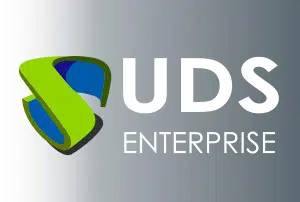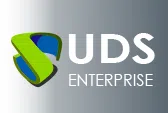What is VDI?
Virtual Desktop Infrastructure (VDI) is an innovative technology that offers remote desktop solutions. Through VDI, users’ desktops are hosted on centralized servers in a data center, allowing them to be accessed at any time, from any location and from any device. This not only improves operational efficiency but also simplifies and ensures better management of IT resources.
What are the advantages of using VDI?
- SECURITY
Strengthens the security of a company’s IT infrastructure, centralizing data and applications on secure servers. This reduces the risk of data loss and makes it easier to manage security updates and patches, which is done automatically from a single console.
- SCALABILITY
It allows businesses to quickly adapt to changing needs by easily adding or removing virtual desktops. This is especially useful for managing seasonal or workload fluctuations.
- FLEXIBILITY
Flexibility is a big advantage of VDI. It allows employees to work from anywhere, at any time, increasing productivity and supporting flexible work policies.
- MULTI-DEVICE
It supports a wide range of devices of any range, including PCs, Thin Clients, tablets and smartphones, allowing users to work with the device they prefer or have on hand at all times.
- SAVINGS
Implementing VDI can lead to significant savings. Reduces the need for expensive hardware and increases equipment life. Additionally, it minimizes operational expenses associated with maintaining and updating individual physical devices assigned to each employee.
What is VDI technology used for?
Teleworking and remote work
It is an ideal solution for companies adopting remote or hybrid work models, providing employees with secure and efficient remote access to their work tools. It is possible to give each employee a desktop with high availability and performance adapted to their needs.
Use of personal devices
VDI facilitates the BYOD (Bring Your Own Device) model, allowing employees to access corporate resources securely from their personal devices.
Improve business security
Enterprises use VDI to improve data and application security by centralizing information in a controlled environment, reducing exposure to external threats. In the event of an attack, the use of non-persistent virtual desktops allows the threat to be isolated and eliminated in a matter of seconds, keeping systems and the corporate network safe. In addition, it is common for data to travel end-to-end encrypted on all connections, and Zero Trust mechanisms and MFA (Multiple Factor Authentication) systems can be implemented.
VDI Types
Persistent VDI
Persistent virtual desktops offer a more personalized experience, where each user has their own virtual desktop, running on a dedicated virtual machine. The configuration and files remain intact between sessions, so more storage resources are needed and the use of backups is necessary.
Non-persistent VDI
Non-persistent virtual desktops provide a generic, uniform environment that resets to its original state after each session. Data and settings are not saved on the desktop (they are stored in “user profiles” so they are always available). When users log out, the virtual desktop is destroyed, assigning the user a new virtual desktop each time they access the system.
How is a virtual desktop infrastructure implemented?
- Evaluation of existing infrastructure
Before implementing VDI, it is crucial to evaluate the existing IT infrastructure to determine the requirements and capacity of the current system.
- Choosing the right solution
Selecting the most appropriate VDI solution requires considering factors such as company size, budget, and specific business needs.
- Data and application migration
Migration involves moving data and applications from the physical to the virtual environment, ensuring that all necessary resources are available in the new VDI environment.
- Infrastructure testing and optimization
After deployment, it is essential to perform testing to ensure that the VDI infrastructure is working correctly and optimize it as necessary.
- Training and support
Providing proper training to end users and the IT team is crucial for a smooth transition to VDI, along with ongoing technical support.
VDI Trends
The adoption of Virtual Desktop Infrastructure (VDI) marks a significant advancement in the way businesses manage their IT needs. By offering a unique combination of reinforced security, operational flexibility and cost savings, VDI is positioned as a comprehensive solution for a variety of contemporary business challenges. Its adaptability to companies of all sizes and the ability to efficiently enable remote work make it a strategic choice for the digital future of any organization.
With current trends leaning towards greater cloud integration and user experience optimization, VDI not only responds to current demands, but also adapts and evolves to meet future needs. Implementing VDI, while it may present initial challenges, offers a significant return on investment through improvements in security, efficiency, and productivity.
As VDI solutions continue to evolve, new opportunities are opening up for businesses to improve their IT infrastructure and prepare for an increasingly digitalized and mobility-focused work environment. Adopting VDI is not only a technological improvement, but a strategic investment for the future, which allows increasing the flexibility and security of a company.
Frequently Asked Questions (FAQs)
What exactly is VDI and how does it differ from other virtualization solutions?
VDI (Virtual Desktop Infrastructure) is a virtualization solution that hosts desktops on a centralized server. Unlike other solutions, VDI focuses specifically on desktop virtualization, allowing personalized and centralized remote access.
What are the main benefits of implementing VDI in my company?
The main benefits include better data security, flexible access, resource scalability, cost savings on hardware and maintenance, and efficient support for remote work.
What type of security does VDI offer and how is it managed?
VDI offers enhanced security through centralization of data and applications, facilitating management of updates and security patches, access control policies, and protection against data loss.
What is the typical cost of implementing VDI and what is the expected return on investment?
The cost varies depending on the scale and specific needs of the company. Although some initial investment is required, the return includes savings on maintenance, increased security, and productivity gains.
Can I use VDI to support remote work for my employees?
Yes, VDI is ideal for remote work as it allows employees to access their desktops and applications 24/7 from anywhere and any device securely.
What are common challenges when implementing VDI and how can they be overcome?
Challenges include implementation complexity, need for adequate bandwidth, and user resistance to change. These can be overcome through careful planning, optimizing network infrastructure, and providing proper training and support to employees.
What type of hardware and software is needed to implement VDI in my company?
Servers are required to host virtual desktops along with specific virtualization software. Client devices (such as PCs, laptops, or mobile devices) and a robust network to support data traffic are also necessary.
How is data and application migration done to a VDI environment?
Migration involves transferring data and applications from existing systems to the VDI infrastructure. This is generally done using specialized migration tools and with the help of IT experts to ensure a smooth and secure transition.
Is VDI suitable for companies of all sizes or only large enterprises?
VDI is adaptable to companies of all sizes. For small and medium businesses, there are scalable and customizable solutions tailored to their specific needs and budgets.
What are the current trends in the world of VDI and how are these solutions evolving?
Current trends include cloud integration, improving user experience with technologies like virtual GPU, increased security and privacy, and support for a wider range of devices and operating systems. These solutions are evolving toward more flexible, secure, and resource-efficient platforms with integrated artificial intelligence (AI).
Are you looking for a VDI solution that is both flexible, customizable and secure? Look no further: UDS Enterprise by Virtual Cable is your ideal choice. With UDS Enterprise, you will get secure, high-performance remote access to your Windows and Linux virtual desktops, from anywhere and on any device. Ideal for organizations of any size, from schools and hospitals to public administrations and call centers. UDS Enterprise adapts perfectly to your specific needs.
Contact us today and discover how UDS Enterprise can transform your workplace!








0 Comments